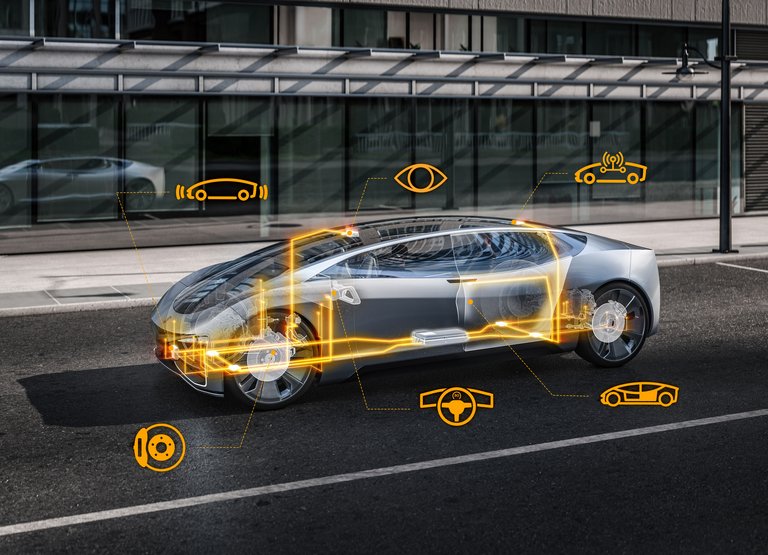Continental Continues to Drive Forward the Development of Server-based Vehicle Architectures
- Vehicle computers continue to gain ground: Series production of domain-specific high-performance computers from Continental for more than 20 vehicle models from various manufacturers scheduled for 2021 and 2022
- Orders for high-performance computers from Continental now with total sales volume of around 5 billion Euros
- Course set for the future: Continental Automotive Edge Platform as the basis for cross-domain vehicle computers from Continental
Hanover, Germany, July 28, 2021. Following the start of production of the so-called In-Car Application Server 1 in Volkswagen’s ID.3 and ID.4 electric vehicles, Continental looks at further series productions of domain-specific high-performance computers for more than 20 vehicle models from various manufacturers and brands in 2021 and 2022 alone. In total, the technology company now has orders for high-performance computers for vehicle cockpit, data management and vehicle connectivity, driving safety and dynamics, or automated driving with a turnover of around 5 billion Euros in the books. The company has also set the course for the future of the software-centric and fully connected vehicle: With know-how from current projects and on the basis of the so-called Continental Automotive Edge Platform, the next generation of vehicle computers is already being created. Continental’s experts are focusing on a cross-domain approach. The aim is to create a hardware and software platform that allows functions from a wide range of vehicle areas, such as driving safety or entertainment, to be integrated. The aim is to offer automotive manufacturers the greatest possible flexibility and modularity for designing vehicle architectures with minimum complexity.
“The development of vehicle electronics from distributed electric control units to server-based architectures involves much more than a technical evolution. We are in the midst of a comprehensive transformation of products, work and development processes as well as business models,” explains Michael Huelsewies, Senior Vice President Architecture & Software at Continental. “With our Continental Automotive Edge Platform, we are therefore focusing on a consistent connection of vehicle functions and services to the cloud and an integrated development environment. Together with our partners and customers, we are thus also creating the basis for cross-domain high-performance computing.”
Holistic platform solution for cross-domain vehicle computers
For Continental, the development of cross-domain high-performance computers is about meeting the different requirements from the individual functional areas and enabling a holistic user experience. While infotainment in the vehicle cockpit focuses on user experience, connectivity and applications from consumer electronics, data management and vehicle connectivity are about mastering complexity and real-time requirements. Driving safety and dynamics and automated driving, on the contrary, focus on strict requirements for functional safety and latency-critical vehicle regulations.
This is precisely where the Continental Automotive Edge Platform comes in. In detail, the flexible modular system consists of high-performance computers, software and cloud platforms as well as services and applications. The Continental platform connects the vehicle with the cloud and, thanks to its modularity, simplifies the development, provision, and maintenance of software-intensive system functions from the various areas of the vehicle. In the future, it will thus be possible for users to conveniently obtain desired functions through software updates over the entire service life of the vehicle. The basis for this is provided by the development environment for software-intensive vehicle architectures, which makes it possible to implement software, sensor and big data solutions in a fraction of the previous development time. In this way, vehicle software can be quickly and securely developed, tested and installed directly on vehicles, which allows or guarantees up-to-dateness, safety and expandability in the vehicle of the future.
In addition, Continental offers a range of programming tools, so-called development kits, which shorten the development cycles of vehicle systems and drive efficient product development. These components for centralized vehicle architectures act like a standardized and modular workbench, making it easier to develop and test functions. Using the cloud also enables scalable and efficient testing and simulation of vehicle functions. This ensures fast and harmonized development and integration of distributed services and applications and enables seamless operation in the software-defined vehicle. The modules of the Continental Automotive Edge Platform complement Continental’s offering and will be presented for the first time at CES 2022.

Sebastian Fillenberg
Head of External Communications
AUMOVIO



